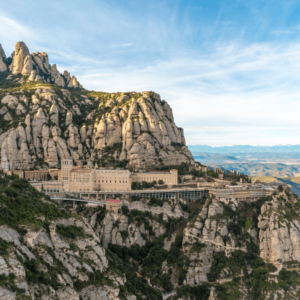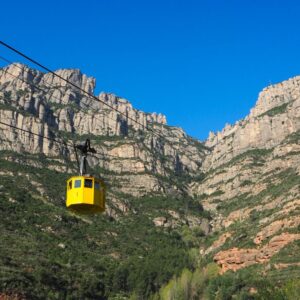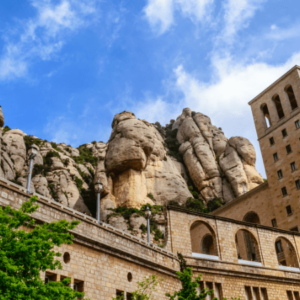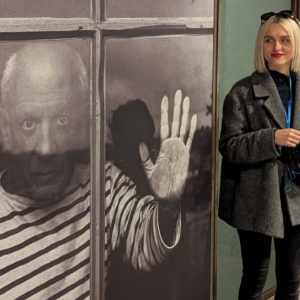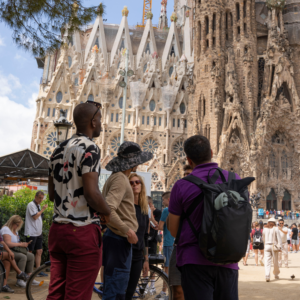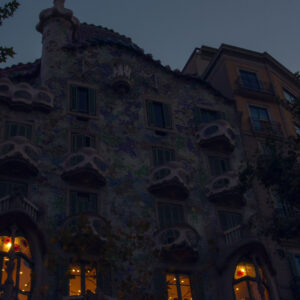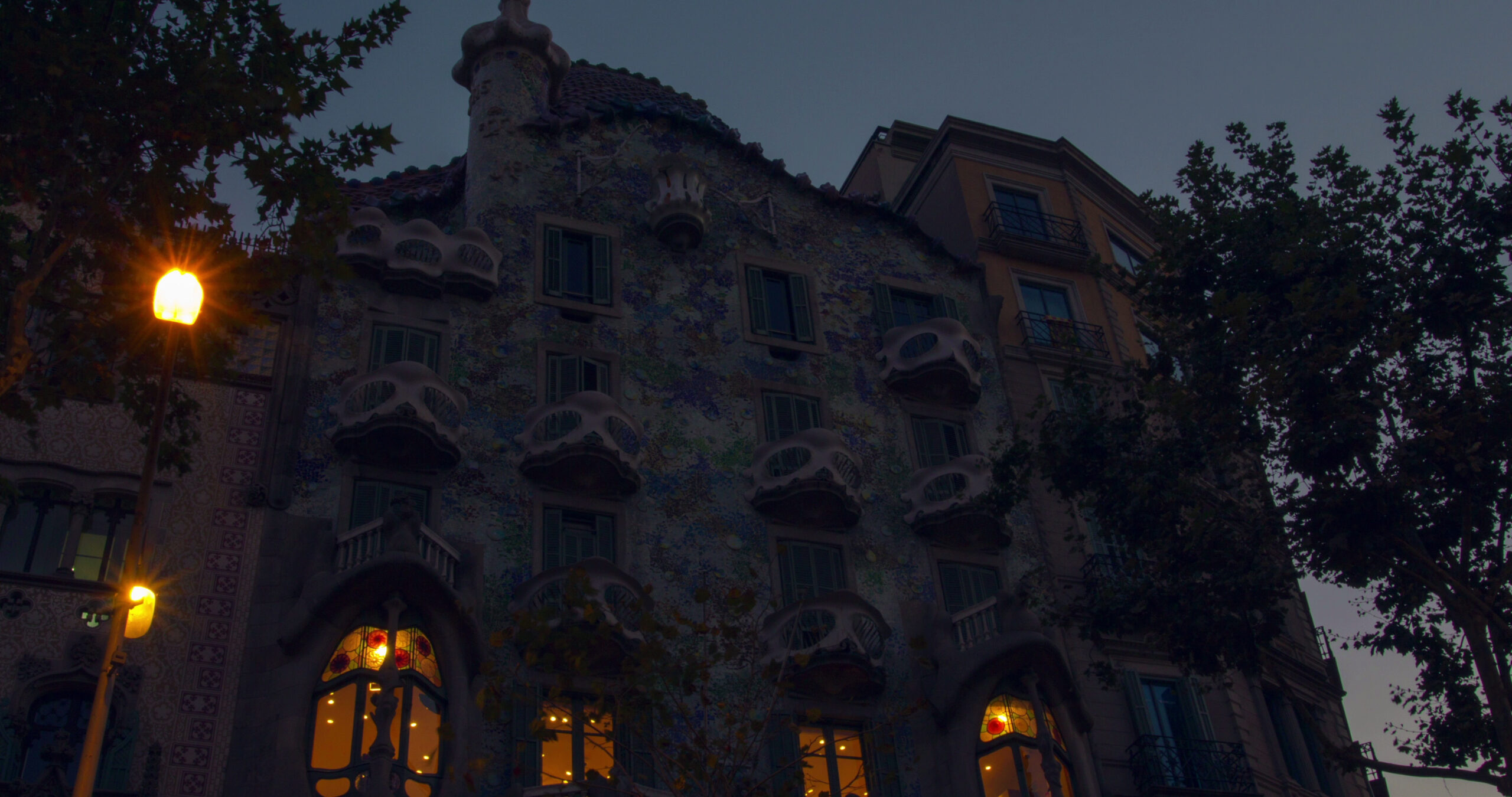The Montserrat Monastery in Spain is a stunning blend of natural beauty, history, and spirituality, making it a must-see for anyone visiting Catalonia. Located amidst the jagged peaks of the Montserrat mountain range, the monastery is famous for its dramatic landscape, breathtaking views, and the revered Black Madonna statue. For those staying in Barcelona, Montserrat is just a short trip away, offering an ideal escape into history, nature, and culture. Let’s dive deeper into the rich history, architecture, and spiritual significance of this remarkable place.
The Origins of Montserrat Monastery: Early History
The history of Montserrat Monastery dates back to ancient times, though the details of its early years are somewhat mysterious. Some traditions suggest that small Visigothic Christian centers existed on Montserrat mountain, but there is no definitive evidence to confirm this. What is known is that after the area was reclaimed from Islamic rule, the Counts of Barcelona made a donation to the Monastery of Ripoll, possibly during the time of Wilfred the Hairy (Guifré el Pelós) in 888. This donation was later confirmed by his son, Sunyer, in 933.

The Development of Monastic Life: Churches and Rivalries
The donation included several small churches—Santa Maria, Sant Iscle, Sant Pere, and Sant Martí—with their surrounding lands. Another nearby religious site, Santa Cecília, was also active on the mountain and initially drew more devotion than the nascent Santa Maria. It’s likely that these early churches served as small monastic centers, but they were initially maintained by Ripoll as simple properties. Over time, however, the monastery at Santa Maria de Montserrat began to grow and develop.
By the 11th century, a small community had formed around Santa Maria de Montserrat, although it remained dependent on Ripoll Abbey. A turning point came in 1019, when the first recorded mention of a specific donation to Montserrat appears. By 1070, Montserrat was recognized as a priory, still under the influence of Ripoll but beginning to establish its own identity. In 1082, Prior Ramón was appointed, the first recorded leader of the Montserrat community separate from Ripoll’s abbots.
Independence and Conflicts: The Struggle for Autonomy
Throughout the 13th century, Montserrat continued to depend on Ripoll, but tensions arose over its governance. The Prior of Montserrat was chosen directly from Ripoll, which sometimes led to disputes. In 1287, the Pope appointed Bernat Salvador from the Abbey of Lagrasse in Languedoc as the new prior, bypassing Ripoll’s authority. This appointment sparked a power struggle between Montserrat and Ripoll. Ultimately, the Archbishop of Tarragona intervened to resolve the conflict, confirming Ripoll’s dominance over Montserrat. However, the desire for independence persisted.
A significant turning point occurred in 1409, when Pope Benedict XIII established Montserrat as an independent abbey, freeing it from Ripoll’s control. This change allowed Montserrat to grow as a spiritual center, and its reputation as a pilgrimage site dedicated to the Virgin Mary continued to spread throughout Catalonia and beyond.
Renaissance Reforms and Expansions
In 1443, monks from Montecassino, Italy, were invited to Montserrat to introduce reforms. However, their efforts were met with resistance from the local community, and it wasn’t until 1455 that the situation stabilized. Despite these internal struggles, the 16th century brought a period of significant growth and renewal.
- Basilica Construction: Work on the Basilica of Montserrat began in 1560 and it was consecrated in 1592. This marked the start of a new era of architectural development, including the construction of a Gothic cloister.
- Expansion of Properties: During this period, the monastery expanded its properties and established new priories in different regions.
- Cultural Flourishing: Montserrat became an important center for printing, gaining prestige over the years. The Escolania (boys’ choir) also grew in prominence, becoming one of the oldest and most respected choirs in Europe.
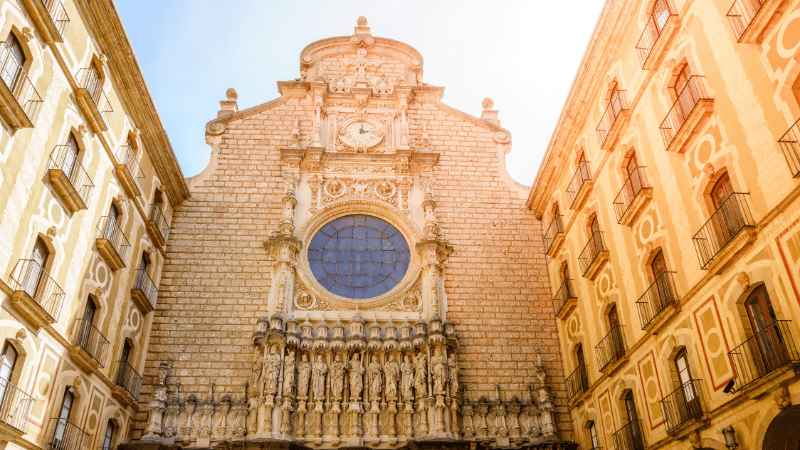
Destruction and Rebuilding: The 19th Century Turmoil
The prosperity of Montserrat was shattered during the Napoleonic Wars. In 1811-1812, the monastery suffered extensive damage due to fire and looting during the Peninsular War, leading to the loss of many historical and artistic treasures. The monks were forced to disperse, and they did not return until 1824.
Shortly thereafter, the Spanish government’s policy of confiscation resulted in the sale of much of Montserrat’s remaining properties. However, the monastic community managed to return in 1844, and in 1862, the Pope appointed a new abbot, fully reestablishing the monastery’s independence. Montserrat then became part of the Benedictine Congregation of Subiaco, a connection it maintains to this day.
The Monastery Today: Architecture and Heritage
The Montserrat Monastery has been rebuilt and transformed over the centuries, with most of its current structures dating from the 19th and 20th centuries. Despite the losses of the past, the site retains many important historical elements:
- Basilica and Cloister: The Gothic cloister and the Basilica of Montserrat are central to the complex. The basilica’s Renaissance façade and interior chapels reflect the artistry of the time.
- Romanesque Portal: A Romanesque portal from the 12th century can still be seen, offering a glimpse into the monastery’s ancient past.
- Art and Treasures: Montserrat’s museum and collections include a variety of artworks and artifacts gathered over the centuries, showcasing both religious and cultural heritage.
The Black Madonna and The Santa Cueva: Symbols of Devotion
One of the key attractions at Montserrat is the Black Madonna (La Moreneta), a Romanesque wooden statue of the Virgin Mary from the late 12th century with Gothic features. Over time, the statue has undergone several modifications, including the painting of the wood in black—a feature that now defines its iconic appearance. The Santa Cueva (Holy Grotto), where the statue is believed to have been found, is another major pilgrimage site and remains a deeply spiritual part of the Montserrat experience.
How Far is Montserrat from Barcelona?
Located about 60 kilometers (37 miles) northwest of Barcelona, Montserrat is easily reachable in just 1 to 2 hours, depending on your mode of transport and starting point. Its proximity makes it a popular choice for a day trip among both tourists and locals, offering a chance to leave the bustling city behind and experience the tranquility of the mountains.
Best Ways to Travel from Barcelona to Montserrat
If you’re planning to visit Montserrat Monastery from Barcelona, you have several transportation options, each with its own advantages. Here’s a closer look at the most popular ways to make the journey:
1. By Train: Quick and Convenient
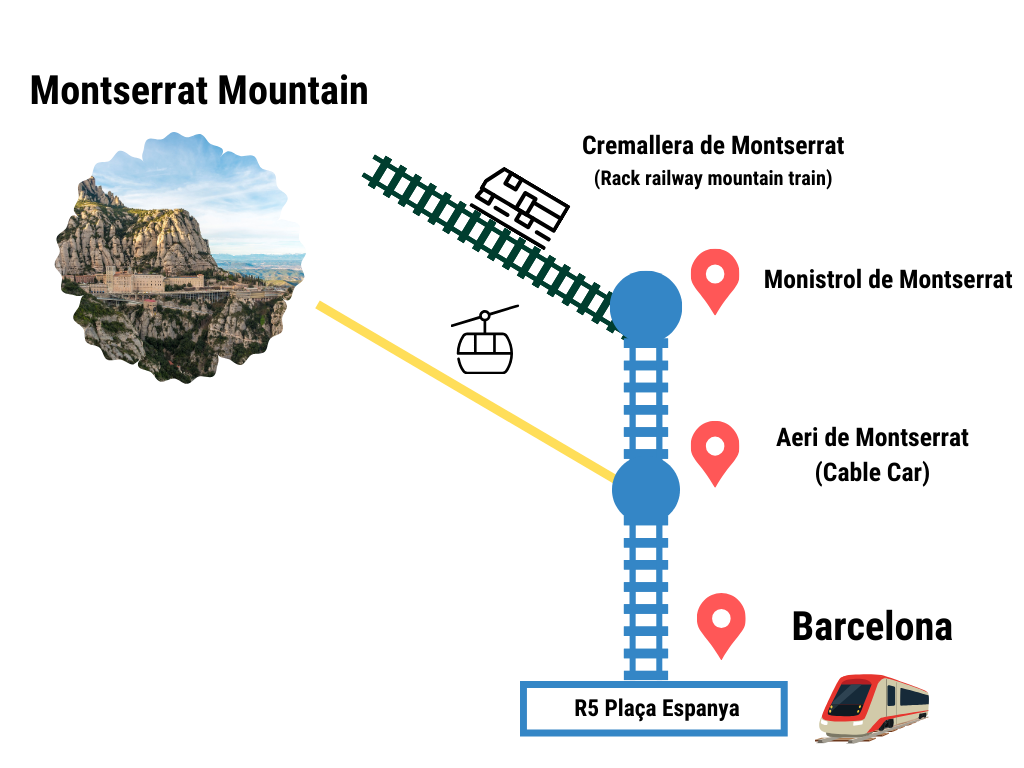
Traveling by train is one of the most popular methods for reaching Montserrat from Barcelona. You can start your trip from Plaça Espanya station, where the R5 line train departs towards Manresa. The train journey takes about 1 hour and drops you at the base of Montserrat, where you can choose between the Aeri de Montserrat cable car or the Cremallera de Montserrat rack railway for the final ascent to the monastery.
Both the cable car and rack railway take around 15 minutes to reach the top, offering stunning views as you climb up to the monastery. The cable car provides an aerial perspective, while the rack railway gives a more grounded view of the surrounding landscapes.
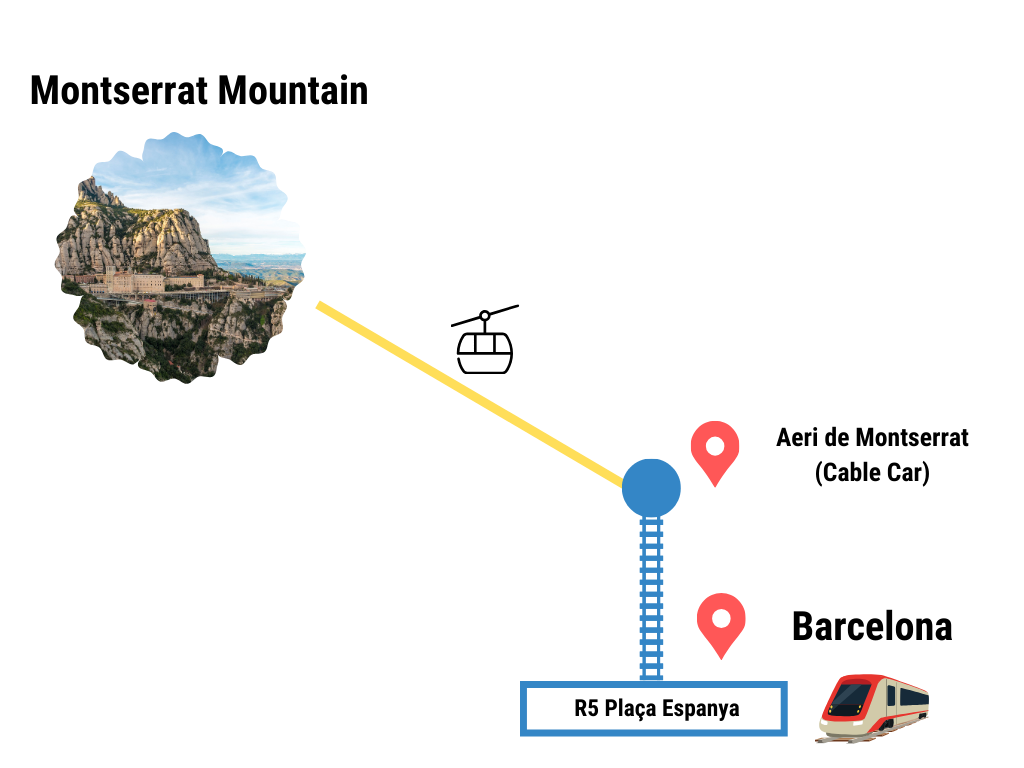
2. By Car: Flexibility and Scenic Drives
For those who prefer a more flexible schedule, driving is a great option. The journey from Barcelona to Montserrat takes approximately 1 hour via the A2 or C-55 highways. Renting a car gives you the freedom to explore the Montserrat Natural Park at your own pace and access viewpoints that may be difficult to reach by public transportation.
There is a parking area near the monastery, but it’s advisable to arrive early to secure a spot, especially on weekends and holidays when the area becomes busier.
3. By Bus: An Affordable Option
Travelers looking for a budget-friendly option can take a bus from Barcelona to Montserrat. Direct buses are available from Estació d’Autobusos Sants or Plaça Catalunya, taking between 1.5 to 2 hours to reach the mountain. While the bus can be a bit slower, it offers a direct route without the need to switch to a cable car or train, making it a convenient choice if you’re staying near the bus stations.
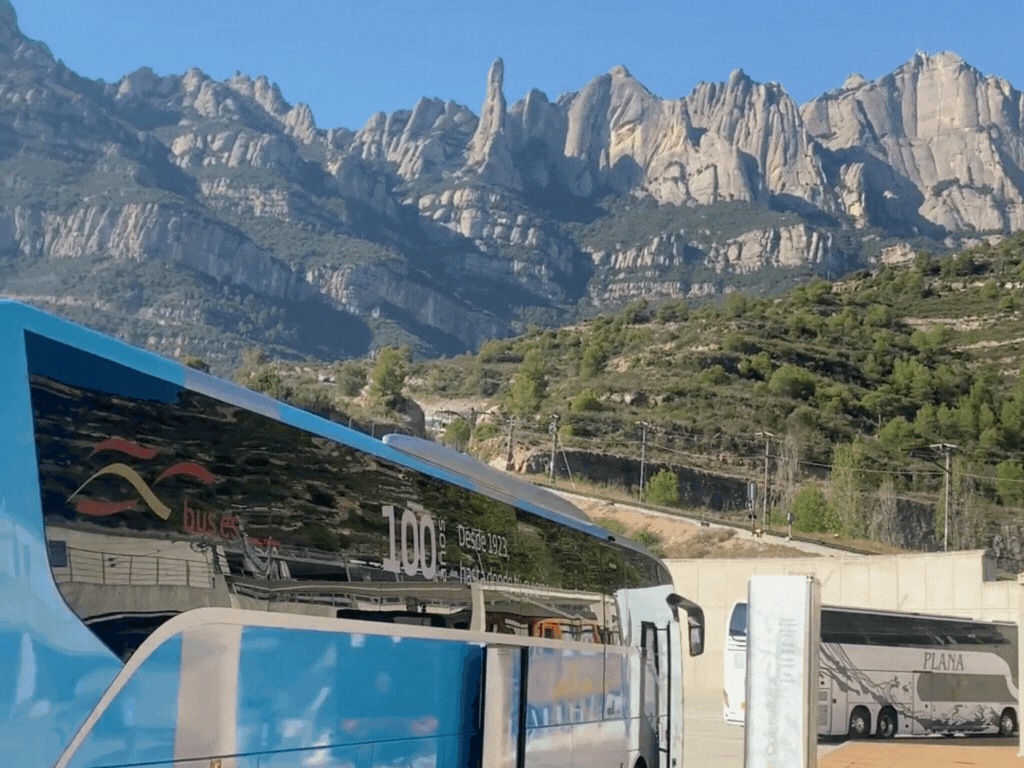
4. Guided Tours: Effortless Day Trips
If you want a stress-free experience, consider booking a guided tour from Barcelona. Many tours include round-trip transportation, a guided visit to the monastery, and sometimes additional activities like a stop at a nearby vineyard. This option is ideal for those who want to fully immerse themselves in the history and beauty of Montserrat without worrying about the logistics.
The Climate of Montserrat
The rugged topography of Montserrat, with its steep peaks and valleys, creates a landscape where the climate can vary significantly over small distances. Rather than a uniform climate, the mountain is characterized by microclimates that shift with changes in altitude and orientation. This means that you might experience varying temperatures and weather conditions as you explore different parts of the area.
At the Monastery’s weather station, located at an altitude of 740 meters, the average yearly rainfall is measured at 678 liters per square meter. The average temperature ranges between 13ºC and 14ºC throughout the year. The proximity to the Mediterranean Sea also influences the climate, bringing in sea breezes and frequent thick fog, which enriches the humidity levels, nurturing the local flora.
Snow is a rare sight in Montserrat, but occasionally, the mountain experiences significant snowfall, transforming the landscape into a winter wonderland. Visitors should be prepared for changing conditions, as the fog can create a mystical atmosphere around the monastery, adding to its serene and otherworldly appeal.
Visiting Hours and Services at Montserrat Monastery
If you’re planning a visit, it’s important to know the opening hours for key sites and services at Montserrat Monastery to make the most of your trip:
- Basilica: Open daily from 7:00 am to 8:00 pm, offering a peaceful space for prayer and reflection.
- Throne of Our Lady: Accessible from 8:00 am to 10:30 am and 12:00 pm to 6:25 pm, providing visitors with a chance to see the revered Black Madonna up close.
- Holy Grotto: Open from 10:30 am to 5:00 pm, allowing you to explore this important spiritual site.
- Religious Services and Escolanía (Boys’ Choir): Performances and services add to the spiritual atmosphere, with more details available through the Pastoral Coordination Centre, which operates from 9:30 am to 1:30 pm and 4:00 pm to 6:00 pm.
Additional Visitor Information
Montserrat also offers various amenities to ensure a comfortable visit:
- Tourist Information: Open from 9:00 am to 6:30 pm on weekdays and until 7:30 pm on weekends, this center can help with any questions you may have.
- Museum of Montserrat: Explore the history and art of the monastery from 10:00 am to 5:45 pm daily.
- Interactive Exhibition: Open from 9:00 am to 6:45 pm on weekdays and 9:00 am to 7:45 pm on weekends, offering a deeper look into the heritage of Montserrat.
- Santa Cecilia: Currently closed to visitors, but its historical significance remains a key part of Montserrat’s story.
Dining and Shopping Options
After exploring the monastery, you might want to grab a bite or pick up some souvenirs. Here are your options:
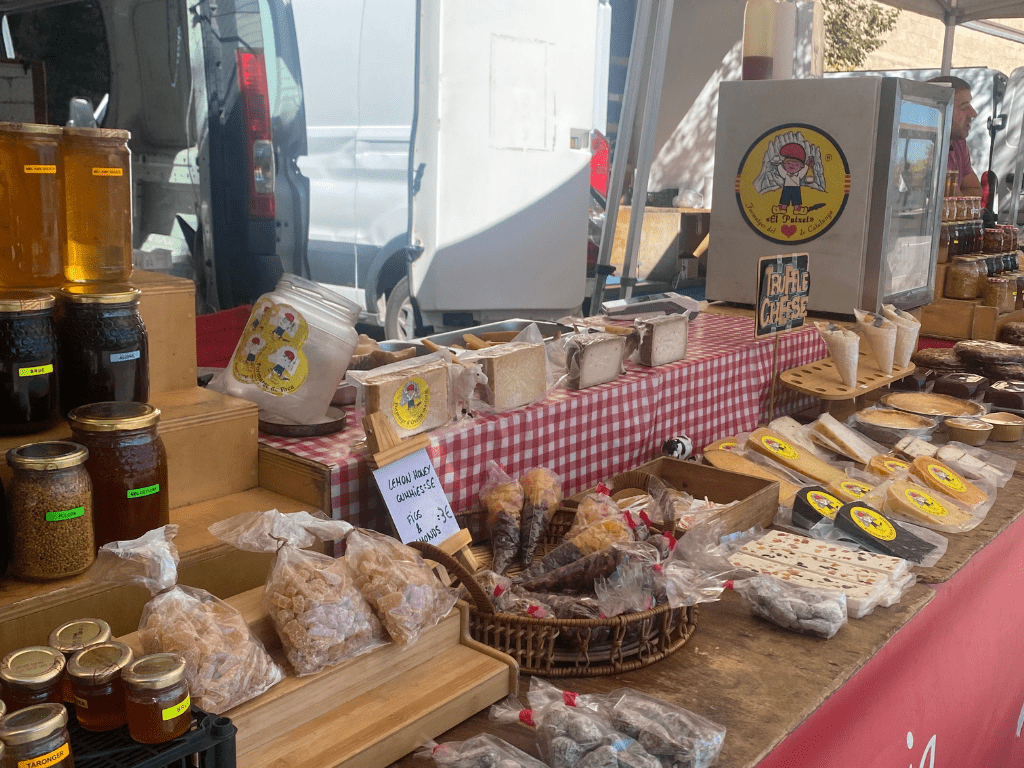
- La Cafeteria: Open from 8:45 am to 6:15 pm on weekdays and until 7:15 pm on weekends.
- La Botiga (The Shop): Perfect for souvenirs, it’s open from 9:00 am to 6:45 pm on weekdays and until 7:45 pm on weekends.
- Buffet: Enjoy a meal between 12:15 pm to 4:00 pm.
- Bar Mirador dels Apòstols: Open from 9:00 am to 5:00 pm on weekdays and until 6:00 pm on weekends.
- Bar de la Plaça: Offering longer hours, open from 8:45 am to 9:00 pm daily.
- Queviures (Supermarket): Open from 9:00 am to 6:45 pm on weekdays and 9:00 am to 7:45 pm on weekends.
- Restaurant Hotel Abat Cisneros: Serving lunch from 1:00 pm to 3:15 pm.
Montserrat Monastery: A Must-Visit Near Barcelona
With its breathtaking mountain views, rich history, and spiritual significance, Montserrat Monastery is a destination that offers something for every type of traveler. At just 60 kilometers from Barcelona, it’s an ideal day trip that provides a refreshing break from city life. Whether you’re drawn by the scenic train ride, the stunning hiking trails, or the serene atmosphere of the monastery itself, Montserrat is sure to leave a lasting impression.
So, pack your camera and sense of adventure, and get ready to explore one of Catalonia’s most iconic landmarks!
Latest Posts from Montserrat
- Easiest and Fastest Route to Montserrat from Barcelona
- Montserrat Funicular (Cable Car): All You Need to Know
- Montserrat Monastery Spain: Guide to Visiting from Barcelona
- Experience the Montserrat Spain Cable Car: A Journey Above the Clouds
- Can You Use the HolaBCN Card to Go to Montserrat from Barcelona?

